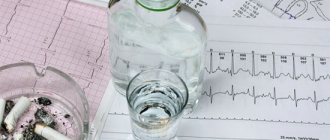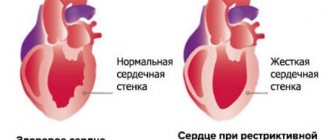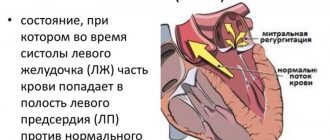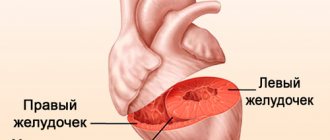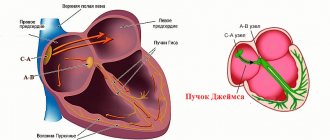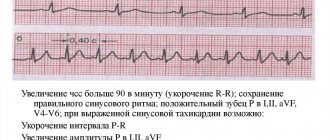With age, the production of hormones in the body decreases. Hormonal imbalances lead to changes in metabolic processes in the myocardium - the heart muscle. This disease is called dyshormonal cardiomyopathy. It is more common in women during menopause and is therefore also called menopausal cardiomyopathy.
But this disease also affects 10 to 20% of men, who may also exhibit symptoms characteristic of menopause. Despite the fact that age-related hormonal changes are a natural process of extinction of a number of functions, they can cause the development of negative processes in the body, in particular, affect the condition of the heart.
This problem can also occur in adolescence during puberty, as well as when using massive hormonal therapy.
What is the disease
Dyshormonal cardiomyopathy is a mostly reversible process that is triggered by a hormonal imbalance in the body. A decrease in the amount of female sex hormones in the body leads to a gradual decrease in metabolism, weight gain, especially with incorrect eating habits, consumption of too high-calorie, heavy and fatty foods.
This allows the so-called abdominal form of obesity to develop, in which visceral fat fills the space between the internal organs, pressing them, disrupting blood circulation, preventing the supply of the required amount of blood with oxygen and nutrients. Lymphatic and blood vessels cease to perform their functions normally, innervation is disrupted, which leads to problems with the autonomic nervous system. All this affects the functioning of the heart muscle, causing myocardiopathy.
Etiology of pathology
Dyshormonal cardiomyopathy appears due to disturbances in the functioning of the endocrine glands that produce biologically active substances (BAR).
The latter perform a vital role in the body - they regulate metabolism. Therefore, any imbalance in hormone levels leads to organ dysfunction. Involvement of the heart in this process is called myocardial dystrophy. An imbalance in hormonal levels can develop due to:
- neoplasms in the prostate gland;
- pathologies of the thyroid gland (TG);
- menopause;
- decreased testosterone production in men over 50 years of age;
- pathologies of the testicles and ovaries;
- adrenal diseases.
In addition, in some cases, DCM can be diagnosed as an independent disease.
Reasons for development
Hormonal cardiomyopathy is a disease that develops against the background of decreased hormone activity. It is more common in women of menopausal age, but can occur earlier, at about 40–45 years, if a woman suffers from gynecological diseases (uterine fibroids, endometriosis).
A decrease in the level of endocrine hormones leads to problems with electrolytic metabolism, and subsequently to dysmetabolic disorders in the functioning of the heart muscle. The next stage is the development of myocardial dystrophy, that is, dystrophic changes in the myocardium, leading to the appearance of pain and other symptoms characteristic of this disease.
Dyshormonal cardiomyopathy (menopausal): causes, symptoms and treatment
The term “dishormonal cardiomyopathy” (CMD) refers to heart damage caused by hormonal imbalance and not of an inflammatory nature.
Metabolism in the heart muscle is disrupted, and its mechanical and electrophysiological functions deteriorate.
Women are more susceptible to dyshormonal cardiomyopathy, both in adolescence and menopause, and only rarely do men suffer from CMP. Moreover, all changes in the myocardium that occur during cardiomyopathy are reversible.
Causes of the disease
Hormonal cardiomyopathy manifests itself against the background of a hormonal imbalance in the body, which occurs when the functioning of the endocrine glands that generate biologically active substances changes.
With insufficient production of hormones, the metabolism in the heart muscle is disrupted, which leads to structural and functional changes in the tissues of the heart muscle.
The main causes of this disease are:
- disruptions in the activity of the endocrine system;
- disruption of the normal functioning of the ovaries in teenage girls, and in women the same occurs during menopause;
- in the case of the appearance of neoplasms in the prostate gland, men can also develop CMP;
- may be a consequence of a disease of the thyroid gland, for example, with thyrotoxicosis;
- sometimes it can be defined as an independent disease.
Manifestations of dyshormonal cardiomyopathy in the female population are several times more common than in the male population. The risk group includes ages under 20 and in the range of 45-50 years.
If cardiomyopathy is caused by ovarian failure, it is called menopausal.
Symptoms
Symptoms of dyshormonal cardiomyopathy strongly resemble myocardial infarction, so its manifestations often become a cause for serious concern for patients:
- Severe cardialgia with a changeable nature of pain - pulling sensations behind the sternum are replaced by sudden shootings in the jaw or left shoulder blade. Severe pain may not go away for a long time, subsiding during the action of strong painkillers, but then returning again.
- There is intense heat in the chest, neck and face and profuse sweating.
- There are signs of vegetative-vascular crises: tinnitus, dizziness, arrhythmia, chills, surges in blood pressure, darkening of the eyes.
- Psychoneurological manifestations include irritability, increased excitability, poor sleep, changeable mood, low performance.
If thyrotoxic cardiomyotomy develops against the background of excess thyroid hormones, its symptoms will be slightly different:
- insomnia;
- absent-mindedness;
- constant tension;
- frequent headaches;
- tachycardia;
- angina pectoris;
- loss of performance;
- dry mouth.
In men with dishormonal cardiomyopathy, potency decreases and sometimes there is a complete absence of libido. Prostatic hyperplasia leads to problems with urination. Sometimes the body produces less urine, which suggests oliguria.
Due to the fact that the symptoms of dishormonal cardiomyopathy strongly resemble angina pectoris, coronary heart failure, and sometimes myocardial infarction, only an experienced cardiologist can make the correct diagnosis. First, he conducts an examination and collects data for anamnesis, after which he makes only a preliminary diagnosis. To confirm and clarify this diagnosis, the patient needs to undergo several more diagnostic tests:
- ECG;
- Ultrasound of coronary vessels and heart;
- radiography of the heart;
- computed tomography;
- MRI.
In addition, you need to do various blood tests: general, biochemical, to determine the lipid spectrum, glucose levels, electrolyte composition, and detect markers of myocardial necrosis.
As a result of such a comprehensive study, it is possible to accurately determine the exact cause of the disease, and this will make it possible to determine the severity of menopause in a woman and choose the optimal treatment tactics for the patient.
Medicines
Conservative treatment of climacteric cardiomyopathy is allowed, which does not require observation in a hospital. Its essence boils down to symptomatic treatment of the patient while natural hormonal changes occur in her body. These activities include:
- taking painkillers that relieve cardialgia;
- in case of acute manifestations of menopause, hormone replacement tactics are used;
- taking sedative drugs;
- taking vitamins, anticoagulants and immunostimulating agents;
- if necessary, cardiac glycosides, vasodilators and diuretics are given.
Bearing in mind that the main cause of dyshormonal cardiomyopathy is a malfunction of the endocrine system, treatment should be aimed at normalizing its functioning.
It is well known that the use of hormones is called “therapy of despair”, because a single dose of a hormone can disrupt the functioning of all endocrine glands of the body.
Therefore, when dyshormonal cardiomyopathy is diagnosed, its treatment should take into account a number of factors:
- therapy should be carried out under the constant supervision of doctors, in long-term cycles;
- selection of the hormone dose in each case is individual and done empirically;
- The effectiveness of treatment is judged by the improvement in the patient’s condition, and is not based on the results of examinations, which are always somewhat delayed.
Painkillers that can be used here include:
- Corvalol;
- valerian;
- lemon balm or mint;
- verapamil or anaprilin.
Most patients are necessarily prescribed metabolic correctors:
- ATP;
- Essentiale;
- riboxin;
- Actovegin;
- Mildronate.
Non-drug treatment
As for the non-drug component of therapy, it is aimed at eliminating factors that can aggravate the course of dyshormonal cardiomyopathy. This includes:
- transition to the right lifestyle;
- giving up all bad habits;
- maintaining the body in a healthy, toned shape;
- following a diet containing foods enriched with magnesium and potassium.
The psychological aspect of the disease is of great importance. A woman’s recovery will come sooner if she continues to lead a full, normal lifestyle, and this is only possible when all her attention is not focused on the painful condition.
She must clearly understand that both menopause itself and the accompanying dishormonal cardiomyopathy are not a threat to life, but only a natural reaction of the body adapting to changes in hormonal levels.
Therefore, psychological support is important for women during this period. Doctors must convince the patient that his life is not in danger; on the contrary, such a reaction of the body to changes in hormonal levels is as normal as possible.
After the cessation of hormonal changes in the body, dishormonal cardiomyopathy will disappear by itself.
Source: https://beregi-serdce.com/bolezni/kardiomiopatija/disgormonalnaya-kardiomiopatiya.html
Manifestations
The symptoms of dyshormonal cardiomyopathy are not clearly expressed and cannot clearly indicate only one disease.
The disease is characterized by the presence of acute burning attacks of pain, starting behind the sternum on the left side and often radiating to the scapula. Attacks can be prolonged, from several hours to several days. A characteristic symptom of this disease is the absence of the positive effect of Nitroglycerin. The same sign allows you to exclude a heart attack.
Physical activity does not affect the patient's condition. You can also name signs indicating disturbances in the functioning of the autonomic nervous system:
- cardiopalmus;
- increased sweating;
- sensations of heat, hot flashes;
- dizziness;
- feeling of numbness, “pins and needles” in the limbs;
- frequent urination;
- shortness of breath, lack of oxygen.
The patient experiences disturbances in psychological balance, irritability, weakened memory, tearfulness, and touchiness.
Characteristic symptoms
Over many years of its manifestation, the disease has been sufficiently studied in clinical settings and gives every reason to assert that it can be diagnosed with high accuracy and effectively treated. Also during this time, clear symptoms of the disease were identified. Cardiopathy has symptoms that are usually the same for all patients, regardless of their age, in all stages of this disease.
Its main symptom is defined as uncomfortable pain in the cardiac region of the chest. It feels similar to angina attacks, however, it also has its own characteristic features. So, pains of a typical aching nature do not stop for a minute, they continue constantly. They can occur after physical work.
Manifestations of difficulty breathing, rapid heartbeat, which is also not dependent on whether the patient was previously subjected to intense physical activity or not, are also recorded. It has also been noted that pain symptoms can last for a considerable time - from a few hours to three - four or even more days, and the patient cannot relieve them, even by taking Nitroglycerin.
In addition, constant aching heart pain is often accompanied in patients by a clear manifestation of autonomic disorders. Among them, doctors note hyperemia (redness) of the skin, a pale appearance of the skin, increased sweating, deviations in thermoregulation, complaints of chills, numbness in the arms and legs, lightheadedness, etc.
Patients often experience an irritable mental state. These are manifestations of tearfulness, aggressiveness, unfounded fear of the dark, empty rooms, depression, depression, memory loss and other symptoms. Taken together, all these distinct vegetative signs also eloquently indicate the presence and development in the patient’s body of processes associated with dishormonal cardiopathy.
Establishing diagnosis
If a patient is suspected of having dyshormonal cardiomyopathy, he is prescribed a series of examinations after talking with a doctor, checking his pulse, heartbeat and blood pressure:
- An ECG allows you to assess the condition of the myocardium and exclude a heart attack.
- Ultrasound of the heart makes it possible to assess the condition of the heart in general terms.
- X-rays will demonstrate serious abnormalities in the heart muscle.
- MRI will help detect myocardial infarction or rule out its presence.
Also read: Secondary cardiomyopathy - types
The patient is also prescribed general clinical blood and urine tests, as well as a test for hormone levels.
Treatment methods
Treatment of dyshormonal cardiomyopathy usually means a comprehensive approach. In addition to medication, the following measures are mandatory for the patient:
- Increased physical activity without overwork. Walking, cycling, swimming, light gymnastics, but not using weights are generally recommended.
- Changing the diet by giving up alcohol, smoking, fried, fatty, smoked foods, increasing the proportion of fish, high-fiber foods, and natural unrefined vegetable oils in the menu.
The main method of drug treatment is hormone replacement therapy.
It is used for women by prescribing minimal doses of hormones for a long time. This method of treatment is also acceptable for men, but in limited quantities, since sex hormones can cause dysfunction of the testicles, including their atrophy. Hormone replacement therapy is always selected individually, depending on the existing hormone levels, general health, age, gender, existing diseases and many other important reasons.
The administration of beta-blockers helps support and strengthen the heart muscle. For increased anxiety, hot flashes, irritability, and sleep disturbances, sedatives are used; in severe cases, antidepressants and tranquilizers are used. After consultation with a doctor, it is possible to use traditional medicine, for example, decoctions of soothing and “heart” herbs.
It is useful to strengthen the immune system and use vitamin supplements and minerals (also as prescribed by the attending physician).
Diagnosis of DCM
It should be noted that the diagnosis of “Cardiomyopathy” (ICD 10 code - I42) in most cases is made by exclusion. Considering that symptoms of DCM can resemble angina pectoris or myocardial infarction, it is first necessary to diagnose these diseases. The doctor, based on complaints, examines the patient, collects anamnesis, and prescribes additional research methods.
Diagnostic algorithm:
general and biochemical blood tests;- hormonal panel study - depending on the etiological factor of the disease;
- X-ray of the chest organs - to determine the size of the heart and the presence of pathology;
- electrocardiogram (ECG). With its help, a decrease in the ST segment and inversion of the T wave are recorded. The study allows us to identify the presence of arrhythmia, extrasystole and paroxysmal tachycardia;
- Magnetic resonance imaging (MRI) allows a reliable diagnosis to be made. Rarely used due to high cost;
- consultation with an endocrinologist and gynecologist.
As a result of a comprehensive study, it is possible not only to accurately establish the cause of myocardiostrophy, but also to choose the optimal tactics for its treatment.
Forecast
Modern medicine classifies this type of disorder as a functional metabolic disease. It is believed that such problems with metabolism in the myocardium can have varying degrees - from irreversible damage to structural destruction.
If the patient consults a doctor on time, undergoes all the necessary examinations and adheres to medical recommendations, then he has a chance to completely get rid of all manifestations of the disease.
This requires an integrated approach using not only medications, but also a complete review and change of one’s lifestyle. The patient will need proper nutrition, giving up bad habits and a mandatory increase in physical activity (without overload).
The patient’s condition can be aggravated by refusal of a healthy lifestyle, the presence of other serious lesions, or the presence of previously used incorrect treatment.
Possible complications
The main complications of cardiomyopathy include arrhythmia, chronic heart failure and other functional disorders of the cardiovascular system. More serious consequences can only be observed if the patient deliberately did not undergo preventive treatment and led an unhealthy lifestyle for many years. But in combination with other pathologies, cardiomyopathy can cause serious conditions for the patient.
In general, the disease has a positive prognosis, since it responds well to treatment and goes away when the provoking factors are eliminated.
Complications are not excluded for any disease, especially in the case of such a complex disease as dyshormonal cardiomyopathy. If the patient feels a deterioration in his condition during treatment, he does not need to panic, since in such cases the situation is not at all hopeless. You should contact your doctor and, with his help, outline additional therapeutic measures, finding out, of course, the causes of the exacerbation.
Is prevention possible?
Menopausal dishormonal cardiomyopathy develops against the background of a decrease in hormonal levels, which no one can avoid. This is part of the inherent aging of the body. But moderate physical activity, proper balanced nutrition, a competent approach to the manifestations of age and even cheerfulness and a lively character can be an excellent prevention of the disease.
You must always remember that the myocardium is a muscle, so it also needs to be trained. She does not like complete inactivity or overload. People in the older age group need to choose a more active lifestyle, walk, get a dog, go swimming.
Equally important is maintaining a normal weight, which can only be achieved with a harmonious, balanced diet.
The ancient Romans said “Via est vita”, that is, “The road is life.” If a person moves enough, he thereby maintains his heart in good working condition. He is less likely than others to have various problems with this vital organ.
